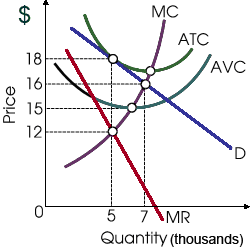If this profit-maximizing firm as in given figure can’t price discriminate, in that case its total revenue will equal to: (w) $90,000 per month. (x) $112,000 per month. (y) $60,000 per month. (z) $120,0000 per month.

Can someone explain/help me with best solution about problem of Economics...